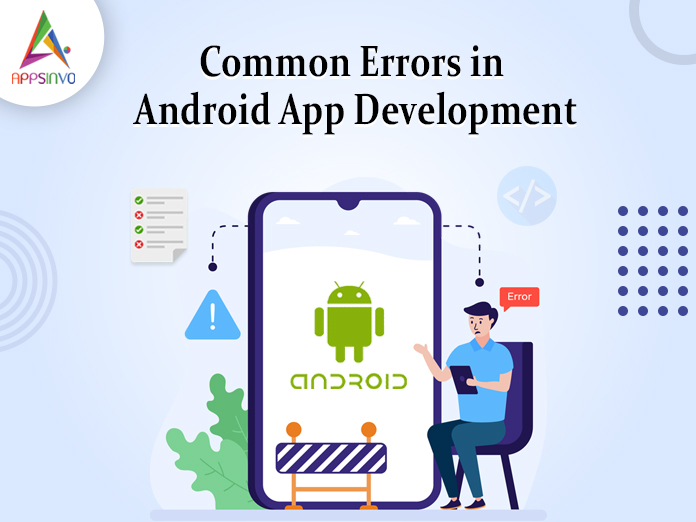Android application development is a complicated activity, and even experienced developers may run into some difficulties. Being familiar with the mistakes that are often made, developers are likely to evade them and build more practical applications. Some of the main areas where developers of the internet can encounter challenges are:
1. Poor user interface design
Inconsistent Design
A typical mistake is neglecting to maintain consistency in the app’s design. Mismatched typefaces, colors, and button styles might be confusing for consumers. Consistency is essential for providing a seamless user experience.
Ignoring Material Design Guidelines
Material Design refers to Android’s particular design principles. Ignoring these principles can result in applications that seem out of place on the platform. Developers should become acquainted with these standards to guarantee that their apps appear and feel natural.
2. Memory leaks
Inefficient Resource Management
Memory leaks occur when an application retains references to things that are no longer required. This can increase memory utilisation and eventually cause the app to crash. Developers should utilise tools like Android Profiler to track memory usage and detect leaks.
Not Using Weak References
Using strong references in long-lived objects might cause memory leaks. Instead, using weak references where appropriate can help alleviate this problem. Developers must be cautious of how they manage references to ensure optimal memory utilisation.
3. Poor performance
Unoptimised code
Ineffective algorithms and unoptimized coding might also cause an app to run slowly. Developers should focus on performance and profile their programs to identify bottlenecks. Tools like Android Lint can help spot the problem early on.
Large consumption of resources
When huge images or complex computations are done on the main thread during app loading, delays may occur. To achieve a responsive UI, developers must either push heavy operations to background threads or use asynchronous programming techniques.
4. Ignoring device compatibility
Testing on limited devices
Focussing on a single device or a limited number of devices can cause compatibility concerns. Android works on a wide range of devices with varying screen sizes, resolutions, and hardware capabilities. Developers should test their programs across multiple devices to ensure compatibility.
Not considering different Android versions
Each version of Android adds new features and modifications. Failure to account for these changes may result in crashes or unexpected behavior. Developers should use the Android Support Library to ensure compatibility with earlier versions while incorporating new functionality.
5. Security vulnerabilities
Storing Sensitive Data Unsecurely
Storing sensitive information in plain text, such as passwords or API keys, poses a serious security risk. Developers should employ encrypted storage methods to safeguard critical information.
Inadequate input validation
Failure to validate user input might result in security vulnerabilities such as SQL injection or buffer overflow attacks. To protect against malicious attacks, developers should use strict input validation.
6. Ineffective error handling
Unhandled Exceptions
Failure to manage exceptions can cause software crashes and provide a bad user experience. Developers should use extensive error handling to manage exceptions gracefully.
Poor user feedback.
When mistakes occur, users should get clear feedback. Simply crashing the program or displaying a generic error message can be frustrating for users. Providing meaningful error messages improves the user experience and supports debugging.
7. Ignoring analytics and user feedback.
Not implementing analytics
Failure to integrate analytics tools may impede developers from understanding user behavior. Analytics helps to monitor user engagement and discover areas for development. To acquire insights, developers could consider using tools such as Google Analytics or Firebase.
Ignoring user feedback.
User ratings and feedback are extremely useful for enhancing an app. Developers should actively monitor feedback and make the necessary changes. Ignoring user feedback might result in stagnation and lower app quality.
8. Overcomplicating the Code
Lack of code modularity
Writing monolithic code that does not divide concerns can cause maintenance issues. Developers should strive for modular code and use design patterns such as MVC or MVVM to achieve separation of concerns.
Not using version control
Ignoring version control can result in code management challenges, particularly in collaborative environments. Using version control systems such as Git allows you to track changes and cooperate successfully.
9. Insufficient Testing
Insufficient Unit Testing
Skipping unit testing can result in unnoticed bugs. Developers should prioritize building unit tests for essential components of their apps in order to assure reliability.
Neglecting User Acceptance Testing
User acceptance testing is critical for determining how actual people interact with your app. Before releasing an app, developers should assemble a group of users to test it and provide feedback.
Conclusion
Finally, while Android app development is difficult, being aware of frequent faults can considerably improve the process. Each area has its own set of issues, ranging from design inconsistencies and memory leaks to security risks and inadequate testing. By proactively addressing these concerns, developers may build strong, user-friendly applications that stand out in a competitive market. Staying informed about best practices and iterating on user feedback will help any Android app succeed.












